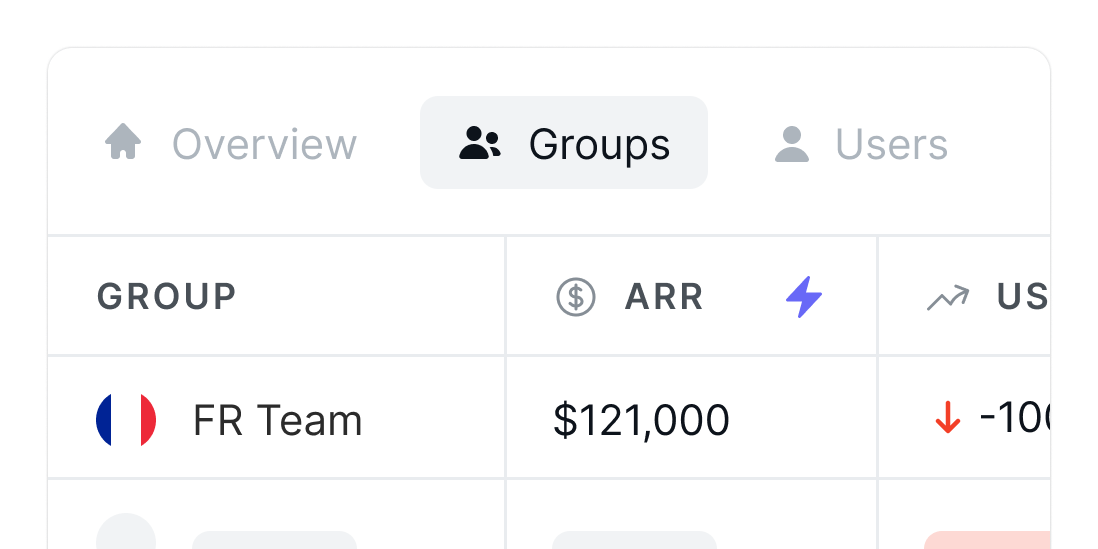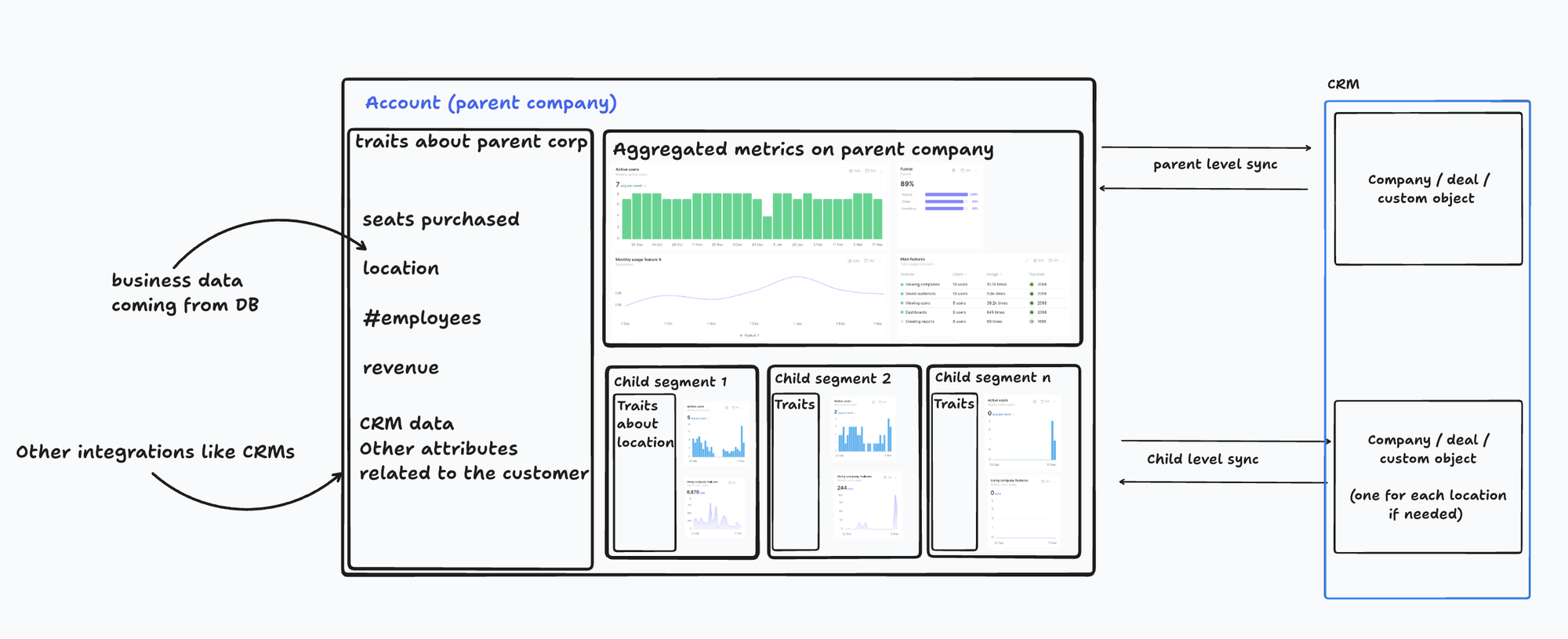



In the world of B2B SaaS and Vertical SaaS, especially when selling to mid-market or enterprise-level clients, not all customers are equal. One account might generate over $100K in annual revenue, but internally it could be made up of multiple departments, teams, or locations—each with different usage patterns, needs, and engagement levels. That’s where customer segment analysis becomes crucial. Customer segment analysis refers to the process of breaking down a customer account into smaller, meaningful units—such as teams, projects, business units, or regions—so that the company can analyze and engage them more precisely. This goes beyond traditional account-based views and offers a much more dynamic and actionable understanding of how a product is used. TL;DR: Customer segment analysis helps B2B SaaS and Vertical SaaS companies—especially those selling to mid-market and enterprise—understand usage patterns at a more granular level, like team, department, or region within the same account. Segmenting customers based on who they are (CRM data) and what they do (product data) is essential for identifying churn risks, unlocking expansion opportunities, and personalizing engagement. June connects product analytics with CRM data, allowing CS teams to create and monitor custom segments that reflect real organizational structures and behavior. With June, SaaS companies can prevent churn earlier, drive smarter upsells, and improve how they engage with every part of a large customer—not just the account as a whole.
In B2B SaaS, product analytics typically focus on aggregate data at the company level. However, this level of abstraction often hides important signals.
A customer might look healthy overall, while one of its core teams is disengaging and at risk of churning. Or a single project may be driving most of the value, leaving room to expand to other underutilized areas.
Segment analysis enables SaaS companies to detect these patterns. Instead of tracking just the account's overall activity, you look at usage trends by team, department, location, or even use case. This level of detail is essential when trying to drive engagement, retention, and upsell conversations with precision and confidence.
Segmentation works by grouping users or accounts based on who they are and what they do. Identity-based segmentation is about the customer’s characteristics: industry, company size, business model, department, geography, or role.
Behavior-based segmentation is based on what they actually do inside your product: how often they log in, which features they use, how many team members are active, or whether their engagement is growing or shrinking over time.
At the enterprise level, segmentation should happen not only across your customer base but within each individual account. For example, you might break down a single $100K ARR customer by region (EMEA vs. US), by department (Marketing vs. Product), or by project (internal testing vs. external rollout).
This is essential if you want to understand what’s working, what’s not, and how to engage with each group differently.
Most SaaS tools focus their customer analytics at the account level.
This may be fine in early-stage companies or when selling to SMBs, where each customer equals one use case and one team. But it falls short when selling into larger organizations.
When a company has 200 seats but only 20 are active—and all of them come from the same team—you need to know exactly which team that is, and whether others have even started adopting the product. Traditional CS tools aren’t built for this level of granularity.
That’s where June comes in.
June integrates product usage data with CRM systems like HubSpot, Salesforce, and Attio, giving you a full picture of your customers—not just what they’re doing, but who they are.
This integration allows you to tie product data (like feature usage or activation milestones) directly to CRM data (like company size, location, deal size, or lifecycle stage), enriching your customer records with both quantitative and qualitative insights.
With June, you can build and monitor custom segments that reflect how your business actually works.
Want to understand which enterprise customers in the fintech vertical are engaging with your new feature? Done. Curious to know which departments inside your largest customer are lagging behind in activation? You can see that, too.
June helps you move from a single static view of each customer to a dynamic, multi-layered and strategic understanding that matches your go-to-market reality.
June is specifically designed to help CS teams operate at the group-of-customers level.
That means it’s not just about seeing data per user or per account—it’s about building views that mirror how your customer accounts are structured internally. You might want to group users by their team, business unit, country, or project. Once grouped, you can track their engagement, compare trends across segments, and trigger alerts or workflows based on specific behaviors.
June is working to give customers even more flexibility here—allowing them to define, edit, and monitor customer groups based on their own rules.

Whether you define a “segment” by email domain, CRM property, product behavior, or any combination of those, June will give you the tools to analyze performance, forecast risk, and identify opportunities at a much finer grain.
Say you have a $200K ARR customer with 150 users across five departments. One team starts logging in less frequently and stops using key features.
Without segment analysis, that drop-off could go unnoticed because the overall account health still looks okay. But with June, you can set up alerts for any segment showing signs of disengagement.
This allows your CS team to intervene early and save the account—before churn happens.
If one team is using your product daily and another hasn’t even onboarded, that’s a signal.
With June, you can pinpoint which departments or locations are underutilizing your product and which ones are driving the most value. That makes your expansion conversations easier—and more data-driven.
You’re not just saying “we think you should buy more seats,” you’re showing that one group is thriving and another could benefit from the same approach.
Different teams inside the same company often have different goals and workflows.
With June, you can adapt onboarding experiences, success metrics, and engagement playbooks based on each segment’s behavior and context. That allows you to move from a one-size-fits-all success model to something much more adaptive and effective—especially in complex, multi-stakeholder accounts.
As SaaS companies scale and move upmarket, the challenge shifts from landing customers to growing and retaining them. And that means understanding them at a deeper level. Segment analysis is the only way to do this effectively.
It lets you track what matters, where it matters, and tailor your actions accordingly.
June helps make this approach possible by combining product data and CRM data into one clear picture, organized around the way your customers actually use your product—not how your CRM says they do.
For B2B SaaS companies working with large, complex clients, this capability is no longer optional. It’s the foundation of a modern customer success strategy.